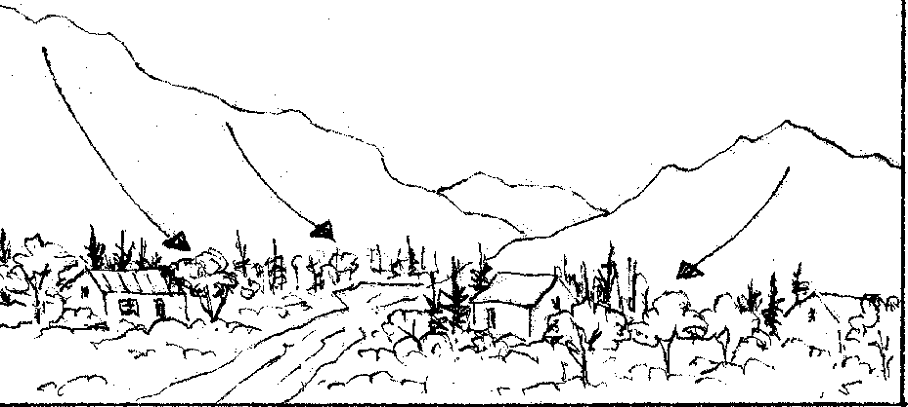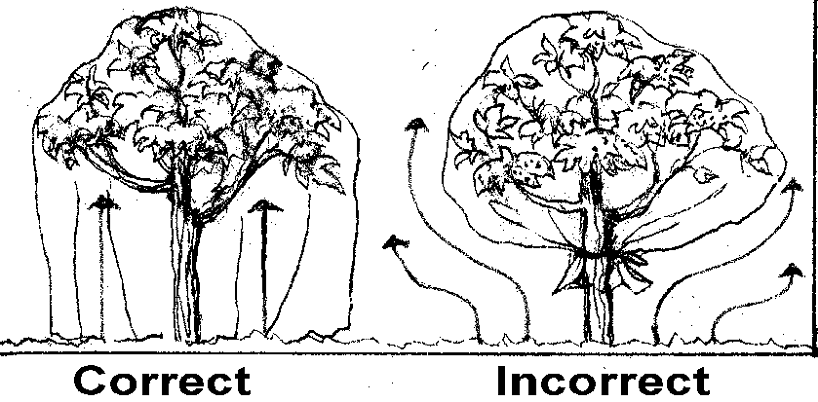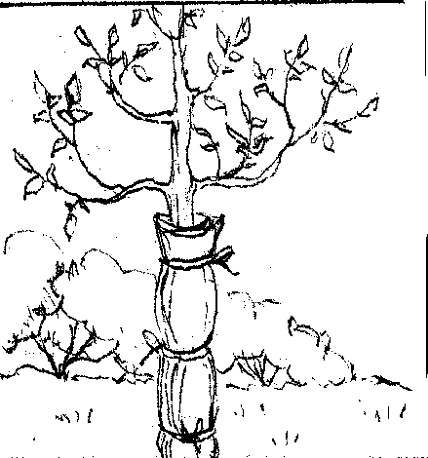|
Understanding Cold Weather
- The sun warms the soil surface during the day; the heat is then radiated into the cool atmosphere during the night. The coldest temperatures occur about daybreak.
- Clouds at night can absorb and reflect heat back to the earth.
- Calm, clear nights pose the greatest danger of frost since there is no wind to mix the ascending warm air with the descending cold air, and no clouds to radiate heat back to the soil.
|

|
- Humidity slows temperature change, which is why extremes between night and day temperatures occur so quickly in our dry desert climate.
- Take temperature readings in your yard daily and compare them to the temperature reported by news. Use this information to predict the impact for forecastedyou are generally 4 degrees colder than the < Radiation: Heat passes through the temperature reported at the airport). atmosphere with negligible impact on air
- Cold air settles downward, flowing like water, temperature (e.g. sunlight).to the lowest point. Hot air rises. Cold air may collect at the bottom of a slope.
- Cold winds compound temperature loss. freeze warnings (e.g. your comparisons will let you know ifyou are generally 4 degrees colder than the < Radiation: Heat passes through the temperature reported at the airport). atmosphere with negligible impact on air
- Cold air settles downward, flowing like water, temperature (e.g. sunlight) to the lowest point. Hot air rises. Cold air may collect at the bottom of a slope.
- Cold winds compound temperature loss.
|

|
Reduce Heat Loss
- Cover plants with cloth or paper (not plastic) to insulate. You can use sheets or blankets for minimal protection or use a frost cloth. A properly applied frost cloth can protect plants at temperatures down to 30E F, some down as low as 20E Fdepending on the fabric and the weave.
- Completely drape the plant from top all the way to the ground. Do not allow any openings for warmth to escape. This procedure will trap the heat radiating from the soil and maintain a more humid atmosphere around the plant foliage.
- Optimally, the drape will be supported by frame which does not allow it to touch the foliage. DO NOT gather the drape around the trunk of the tree. The goal is to trap heat being radiated from the ground, so ensure that the drape touches the ground at least as far out as the drip line.
- If you use sheets or blankets, remove the coverings every morning when the temperature under the covering warms to 50E F. Permanently covering plants with sheets or blankets for the duration of the winter can be harmful and is not recommended in southern Arizona. Even if the temperature under the drape does not warm up enough to ˇ°cookˇ± the plant,it is likely to warm up enough to cause the plant to break dormancy, begin actively growing, and thus become more susceptible to frost damage. Many of the frost cloths available may be left on for extended periods without risk of harming the plant.
|

|
- Wrapping trunks of young citrus and other frost sensitive trees is a practical way of preventing serious frost damage to their vital stem area.
- Multiple layers of weatherproof paper or cloth provide good insulation against cold. Looser wrapping provides better insulation and should extend completely to the ground and at least up to the lower branches or limbs. This wrapping may be left on all winter (mid-November through mid-February)
|

|
| |
|

